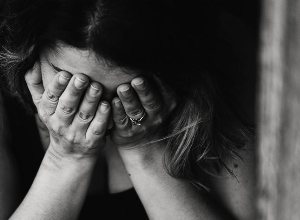World Mental Health Day: Closing the gap of disparities in mental health
Published 10 Oct 2021 • By Courtney Johnson
For World Mental Health Day, a day held annually on 10 October to raise awareness for mental health issues across the world and mobilise support, we wanted to shine a light on an important topic: disparities in mental health.
Research in recent years has uncovered disparities between different populations in terms of risk, prevalence, presentation, and therefore care of mental health conditions.
What are these disparities in mental health? Which populations are affected? What can we do to close the gap and ensure mental health care for all?
We discuss it all below!

Mental health is a topic that has gained more attention in recent years. The national conversation about mental health is often activated by a negative crisis, such as a terrorist incident, the death of a public figure, or more recently, a global pandemic. However, the mental health challenge that many people face is a much larger issue and is often experienced out of the public eye and concern.
The prevalence of mental health issues is on the rise
In 2016, it was estimated that around 1.1 billion people were living with a mental illness worldwide. According to Mind, approximately 1 in 4 people in the UK experience mental illness each year.
Globally in 2018, the World Health Organization found that the most prevalent mental illness diagnoses were depression, affecting around 300 million people; bipolar disorder, with around 60 million people diagnosed; schizophrenia and other psychoses, affecting approximately 23 million people across the globe; and dementia, with around 50 million people living with the disorder.
Researchers in the United States have additionally reported that mental health conditions, including depression, are the third largest cause of hospitalisation for adults aged 18-44.
While these numbers are concerning, a further issue that receives insufficient attention is mental health disparities. Within this group of already marginalized individuals, there are subsets of people who face even greater challenges.
What are mental health disparities?
The Institute of Medicine (IOM) defines a disparity as a “difference in the quality of health care not due to differences in health care needs or patient preferences.” These differences can have their origins in inequalities in access to quality healthcare providers, variations in insurance coverage, or discrimination by healthcare professionals during clinical evaluations.
Other common barriers to mental health care include:
- Social stigma about mental illness
- Previous negative experience in medical or mental healthcare
- Limited mental health literacy, or knowledge and beliefs about mental health conditions that aid their recognition, management, or prevention
- Language barriers
- Sociohistorical experiences
- Desire for self-reliance or self-support
- Lack of financial resources
- Proximity to mental health services
- Lack of culturally competent healthcare providers or services
Many of these barriers, notably limited English language skills, insufficient health knowledge, lack of insurance, and geographic inaccessibility are more common among immigrants, minority groups, people of lower socioeconomic status, individuals located in rural areas; these groups are therefore more likely to face mental health disparities.
Which populations are more likely to experience mental health disparities?
Men
Although on average 1 in 8 men, versus 1 in 5 women, are facing a form of mental illness, men are actually underdiagnosed. They are statistically less likely to be diagnosed with common mental illnesses such as depression, anxiety, obsessive-compulsive disorders, and phobia.
The National Institute of Mental Health (NIMH) in the US has found that one of the difficulties in treating men is a lack of knowledge or understanding among mental health professionals about the common indications and symptoms of mental illness in men, which can differ from those in women.
Additionally, many men are reluctant to seek help for mental health issues due to certain biological, psychological, and even more significant cultural reasons, such as social stigma. Men are often socialized with particular “masculine” ideals that discourage them from getting treatment and believe that if experienced, mental illness should be handled on one’s own. The notion that depression is a self-limiting illness, that using drugs is an efficient method to cope with it, and that depression is caused by personal weakness are all factors that encourage men to manage depression alone.
Young adults
According to the Mental Health Foundation, 75% of all lifetime cases of mental health disorders begin before age 24. However, it is young adults who have the highest prevalence of mental illness and the lowest rate of mental health service usage. For example, in 2016, 22% of young people in the US were diagnosed with a mental illness, but only 35% of those individuals sought help.
Both suicide and substance abuse are also significant concerns for this population: young adults often have higher rates of suicidal ideation, planning, and attempts and statistics have shown that young adults have higher rates of admittance to hospital for substance abuse issues.
Black, Indigenous, and People of Colour (BIPOC)
Statistical studies have found that rates of mental illness for Black, Indigenous and People of Colour are sometimes greater than for white people. For example, men and women from African-Caribbean communities in the UK experience higher rates of PTSD and suicide risk and are more four times more likely to be detained under the Mental Health Act than whites. Very often, the consequences of mental health disorders on BIPOC individuals may be much more profound.
People from the BIPOC community are disproportionately faced with challenges linked to mental illness, such as violence, poverty, and homelessness, as well as significant impediments to accessing quality mental health care. Research indicates that in comparison to white people, BIPOC are:
- Less likely to seek out mental health services
- Less likely to have access to services
- Less likely to receive necessary care
- More likely to receive substandard care
- More likely to end mental health services or care early
Research has also shown that healthcare provider bias and stereotyping are important factors in mental health disparities because they contribute to mis- or underdiagnosis of mental illness in BIPOC communities.
Other factors that contribute to barriers to mental health treatment for BIPOC include social stigma of mental illness among ethnic or racial minority communities, language differences between the patient and provider, and cultural presentation of illness symptoms.
LGBTQIA+
In May 2021, an Office for National Statistics (ONS) study reported that 6.3% of the UK population aged 16 years and over identify as part of the LGBTQIA+ community. A research article published in the BMC Psychiatry Journal in 2016 that pooled data from several studies in the UK determined that LGBT individuals are more than twice as likely as heterosexual people to experience mental illness in their lifetime. Furthermore, the prevalence of depression, anxiety, and substance abuse among LGBT individuals has been found to be 2.5 times greater than that of cisgender heterosexuals.
LGBTQIA-identifying individuals encounter a variety of problems and impediments to mental health care access, including a scarcity of professionals competent in LGBT health issues, a lack of health insurance coverage and personal financial resources, and inadequate transportation to LGBT-specific health services.
The National LGBT Survey in 2018 found that 24% of respondents had accessed mental health services, but a further 8% had tried to get help and failed. Those who sought help found it difficult to do so, with many experiencing long waiting lists and unsupportive responses from GPs. many LGBTQIA+ people have also reported feeling uncomfortable in medical settings as a result of prior discrimination based on sexual orientation or identity. As a result, many patients may skip or postpone necessary medical or mental health procedures and services.
What can we do to close the gap in mental health disparities?
It is clear that the mental health system is flawed and that efforts need to be made to bridge the gap to ensure that mental healthcare is accessible to all.
But what can we do on an individual level to help make positive change?
Reduce mental health stigma
Stigma can cause us to feel ashamed for things that are out of our control, like our mental health, and can keep us from getting the help we need.
It can be hard, but a key way to end stigma against mental health is to talk about it. Sharing our experiences with mental health – both the good and the bad – helps to educate others who may not be aware and to break down outdated societal prejudice.
Lobby your legislators to improve accessibility
To encourage change at a larger scale, we can write, call, or talk to legislators – both local and federal. It is important to call on those who represent us to support efforts to improve access (both financial and geographic) to and the quality of mental health services on a community and national scale.
Was this article helpful to you?
Give it a like and share your thoughts and questions with the community in the comments below!
Take care!
Sources:
Mental health inequalities: factsheet, Centre for Mental Health
Mental health facts and statistics, Mind
Mental health statistics: men and women, Mental Health Foundation
Mental health statistics: children and young people
Young people's substance misuse treatment statistics 2018 to 2019: report, Gov.UK
Black, Asian and minority ethnic (BAME) communities, Mental Health Foundation
Mental Health Disparities: Diverse Populations, American Psychiatric Association
Disparities in Mental Health Status and Mental Health Care, APA
Perzichilli, T. (2020, May 12). The historical roots of racial disparities in the mental health system. Counseling Today, from https://ct.counseling.org/2020/05/the-historical-roots-of-racial-disparities-in-the-mental-health-system/.
Wells-Wilbon, R., Porter, R., Geyton, T., & Estreet, A. Mental Health Disparities. Encyclopedia of Social Work. Retrieved 6 Oct. 2021, from https://oxfordre.com/socialwork/view/10.1093/acrefore/9780199975839.001.0001/acrefore-9780199975839-e-1253.
Semlyen, J., King, M., Varney, J. et al. Sexual orientation and symptoms of common mental disorder or low wellbeing: combined meta-analysis of 12 UK population health surveys. BMC Psychiatry 16, 67 (2016). https://doi.org/10.1186/s12888-016-0767-z
Sexual orientation, UK: 2019, Office for National Statistics
Disparities Within Minority Mental Health Care, NAMI
9 Ways to Fight Mental Health Stigma, NAMI

 Facebook
Facebook Twitter
Twitter


